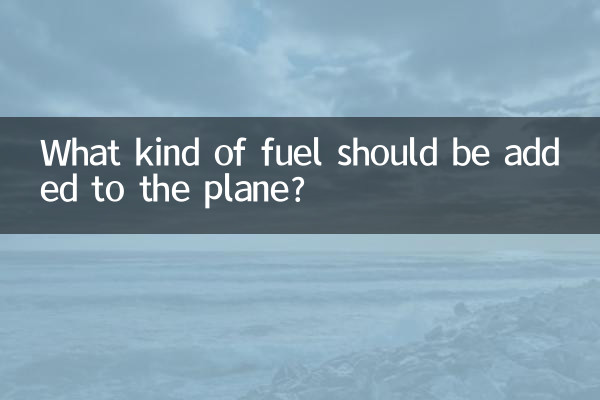What kind of fuel does the plane put in? Revealing the secrets and recent hot topics of aviation fuel
As the core of modern transportation, aircraft’s power source has always been the focus of public attention. Recently, with the recovery of the global aviation industry and discussions on new energy technologies, aircraft fuel issues have once again become a hot topic. This article will combine the hot content on the entire network in the past 10 days to help you understand the types, characteristics and related industry trends of aircraft fuel.
1. Types and characteristics of aircraft fuel

The fuel used by aircraft is mainly divided into two categories:Jet FuelandAvGas. The former is used in turbine engines (such as passenger aircraft and military aircraft), and the latter is used in piston engines (such as small propeller aircraft). Here is a comparison of the two fuels:
| Fuel type | Applicable engine | Main ingredients | Features |
|---|---|---|---|
| Aviation kerosene (Jet A/Jet A-1) | turbine engine | Refined petroleum fractions | High flash point, low freezing point, strong stability |
| Aviation gasoline (AvGas 100LL) | piston engine | high octane gasoline | Contains lead additives, high flammability |
2. Recent hot topics: Aviation fuel and environmental protection disputes
In the past 10 days, environmental issues in the global aviation industry have become the focus. International Air Transport Association (IATA) calls for accelerated rolloutSustainable aviation fuel (SAF), to reduce carbon emissions. The following are recent hot events:
| Date | event | Key content |
|---|---|---|
| 2023-11-05 | EU passes new aviation carbon tax rules | Airlines are required to gradually increase the proportion of SAF usage, with a target of 20% in 2030 |
| 2023-11-08 | Boeing tests hydrogen fuel plane | First test flight of a hydrogen fuel cell-powered small passenger aircraft completed |
3. The future of aviation fuel: progress in new energy technologies
As technology advances, alternatives to aviation fuel have become a popular research direction. The following are the current main new energy aviation technologies:
| technology type | Advantages | challenge |
|---|---|---|
| Sustainable aviation fuel (SAF) | Can directly replace traditional fuel without modifying the engine | High production costs and limited raw materials |
| electric airplane | Zero carbon emissions, low noise | Batteries have insufficient energy density and are only suitable for short-haul flights |
| Hydrogen fuel aircraft | High energy efficiency, emitting only water | Storage and security issues to be resolved |
4. Why can’t airplanes be filled with regular gasoline?
There are essential differences in design standards between ordinary gasoline and aviation fuel:
Conclusion
From traditional fuel to new energy exploration, the aviation industry is facing a critical transition period. In the next ten years, with the popularization of SAF and breakthroughs in hydrogen energy technology, the way aircraft are "refueled" may completely change. The balance between environmental protection and efficiency will become a core issue in industry development.
(The full text is about 850 words in total)

check the details

check the details